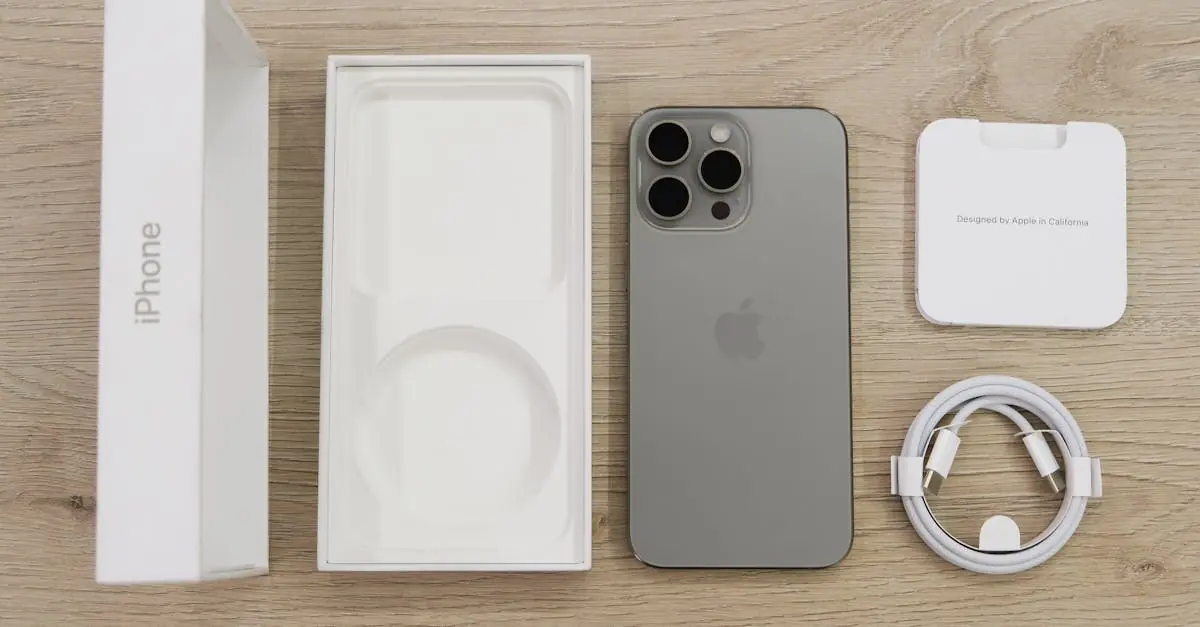Switching Apple IDs on an iPhone might sound as tricky as teaching a cat to fetch, but fear not—it’s easier than you think! Whether you’re trying to separate your work and personal life or just want to reclaim your long-lost game progress, the process can be a breeze with the right guidance.
Table of Contents
ToggleUnderstanding Apple ID
An Apple ID functions as a personal account, crucial for accessing Apple services. It connects users to iCloud, the App Store, and other Apple platforms.
What Is an Apple ID?
An Apple ID consists of an email address and a password. Use this account for services like iTunes, iMessage, and Apple Music. Many features on Apple devices require an Apple ID for personalization and data synchronization. It allows for secure access to apps and content purchases. Users can manage settings, subscriptions, and family sharing options through this account.
Why You Might Want to Switch
Switching an Apple ID can separate personal and work accounts. Users might also switch to recover lost data in an app or change email addresses linked to their account. Different Apple IDs provide distinct purchase histories, allowing users to curate content for specific needs. Some might choose to switch to access family sharing features or enhance privacy settings. The flexibility to switch ensures an organized digital experience tailored to various aspects of life.
Steps to Switch Apple ID on iPhone
Switching your Apple ID on an iPhone involves a few straightforward steps. These steps ensure a seamless transition while keeping data secure.
Preparing Your Device
Backup data before initiating the switch. Use iCloud or connect the iPhone to a computer to create a backup. Ensure software is up to date by navigating to Settings, then General, and selecting Software Update. Check for any app updates in the App Store. Verify that services like iMessage and FaceTime are logged out of the current Apple ID to prevent conflicts during the switch.
Signing Out of Current Apple ID
Open Settings and tap on the user’s name at the top. Scroll down and select Sign Out. Enter the password associated with the current Apple ID when prompted. Choose whether to keep a copy of your data on the device, like contacts and calendar events. Confirm signing out; this action removes the current ID and disconnects Apple services.
Signing In with a New Apple ID
Return to Settings and select the option to Sign In to your iPhone. Enter the new Apple ID and password. If prompted, authenticate using two-factor authentication, if enabled. Follow on-screen instructions to complete the sign-in process. Choose preferences for services like iCloud, App Store, and iMessage during this setup phase.
Potential Issues When Switching
Switching Apple IDs can lead to several potential issues. Users should be aware of the implications before making the change.
Loss of Data
Data loss often occurs when switching Apple IDs. Contacts, calendar events, and notes might not transfer automatically to the new account. Apps purchased under the old Apple ID may no longer be accessible after the switch. It’s crucial to back up important information beforehand. Relying on iCloud or a computer backup can prevent unfortunate losses. Files stored in iCloud linked to the old Apple ID may remain inaccessible without the original credentials. Always double-check which data needs attention before proceeding.
App Compatibility
App compatibility issues may arise after switching Apple IDs. Some applications require re-authentication after changing accounts. Users may discover that certain apps tied to the old account will not update or download onto the device. Issues can vary based on app developers and their integration with Apple ID services. Changing accounts might also affect in-app purchases and subscriptions. Users should ensure that their important apps link to their new Apple ID. Reviewing app permissions and settings after switching can provide clarity on accessibility.
Tips for a Smooth Transition
Switching Apple IDs can be straightforward with the right preparation. Following these tips ensures a seamless experience.
Backing Up Your Data
Backup data before switching Apple IDs to prevent loss. Use iCloud to store important files or connect to a computer for a thorough backup. Access Settings, tap on your name, and select iCloud to enable backup options. Regular backups help retain contacts, calendar events, and notes during the transition. Verify that all desired information is securely saved before proceeding. Avoid the risk of losing important documents by taking this crucial step.
Managing Your Apps and Purchases
Managing apps and purchases requires attention when switching Apple IDs. Understand that purchased apps do not transfer to the new account. Redownload apps under the new Apple ID to regain access. Check the settings for each app after the transition to ensure proper functionality. Some apps may require re-authentication. Reviewing purchase history can offer clarity on which apps were acquired under the old ID. Keep track of subscriptions, as they may link to the former account, necessitating updates for continued access.
Switching Apple IDs on an iPhone can enhance the user experience by allowing better organization of personal and work accounts. With the right preparation and understanding of potential pitfalls users can navigate the process smoothly.
Backing up data is crucial to avoid any loss and ensuring that important information remains accessible. After switching Apple IDs users should review app settings and permissions to maintain functionality.
This flexibility empowers users to tailor their digital lives while enjoying all the benefits Apple services offer. Embracing this change can lead to a more streamlined and personalized experience on their devices.



